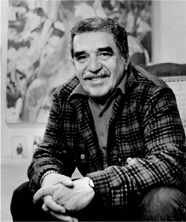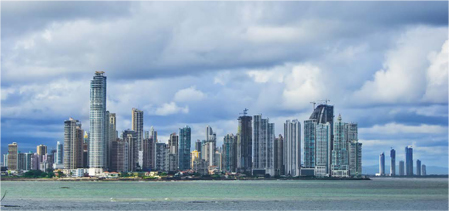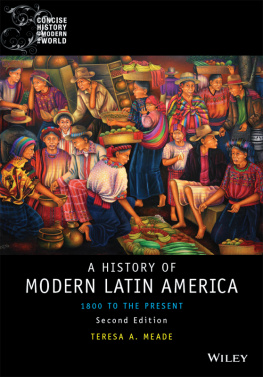
Published in 2018 by Britannica Educational Publishing (a trademark of Encyclopdia Britannica, Inc.) in association with The Rosen Publishing Group, Inc.
29 East 21st Street, New York, NY 10010
Copyright 2018 The Rosen Publishing Group, Inc. and Encyclopdia Britannica, Inc. Encyclopdia Britannica, Britannica, and the Thistle logo are registered trademarks of Encyclopdia Britannica, Inc. All rights reserved.
Distributed exclusively by Rosen Publishing.
To see additional Britannica Educational Publishing titles, go to rosenpublishing.com.
First Edition
Britannica Educational Publishing
J.E. Luebering: Executive Director, Core Editorial
Andrea R. Field: Managing Editor, Comptons by Britannica
Rosen Publishing
Carolyn DeCarlo: Editor
Nelson S: Art Director
Michael Moy: Series Designer
Ral Rodriguez: Book Layout
Cindy Reiman: Photography Manager
Nicole Baker: Photo Researcher
Library of Congress Cataloging-in-Publication Data
Names: Nichols, Susan, 1975- author.
Title: The people and culture of Latin America / Susan Nichols.
Description: New York : Britannica Educational Publishing in Association with Rosen Educational Services, 2018. | Series: Exploring Latin America | Audience: Grades 5-8. | Includes bibliographical references and index.
Identifiers: LCCN 2017001516| ISBN 9781680486926 (eBook)
Subjects: LCSH: Latin AmericaSocial life and customsJuvenile literature.
| Latin AmericaIntellectual lifeJuvenile literature. | Latin AmericaSocial conditionsJuvenile literature.
Classification: LCC F1408.3 .N49 2017 | DDC 980dc23
LC record available at https://lccn.loc.gov/2017001516
Manufactured in the United States of America
Photo credits : Cover DEA/Archivio J. Lange/De Agostini/Getty Images; pp. 45, 8, 16, 24, 30, 35 (background) marchello74/Shutterstock.com; p. 4 Ben Martin/The LIFE Images Collection/Getty Images; p. 5 Encyclopaedia Britannica, Inc.; p. 6 Kryssia Campos/Moment Open/Getty Images; p. 9 DEA/G. Dagli Orti/De Agostini/Getty Images; p. 10 Print Collector /Hulton Archive/Getty Images; pp. 1213 Library of Congress, Washington D.C. (neg. no. LC-USZC4-743); p. 14 Courtesy, Library Services Department, American Museum of Natural History, New York City (Neg. No. 321546); p. 16 (inset) Photos.com/Thinkstock; pp. 1819 By lazyllama/Shutterstock.com; p. 21 Digital Vision/Getty Images; pp. 2223 Shostal Associates; p. 25 Gkhan Bozkaya/Alamy Stock Photo; p. 27 Frank Speed; pp. 2829 Hector Retamal/AFP /Getty Images; p. 31 Education Images/Universal Images Group/Getty Images; p. 32 Jon Hicks /Corbis Documentary/Getty Images; p. 33 RosaIreneBetancourt 3/Alamy Stock Photo; p. 36 Mondadori Portfolio/Getty Images; p. 38 Library of Congress, Washington D.C. (neg. no. LC-USZ62-42516); p. 40 Alex Wong/Getty Images; p. 42 New York World/Telegram & Sun Collection/Library of Congress, Washington, D.C. (reproduction no. LC-USZ62-118256); back cover By Filipe Frazao/Shutterstock.com.

CHAPTER ONE
INDIGENOUS ROOTS
CHAPTER TWO
LIVING IN LATIN AMERICA
CHAPTER THREE
RELIGION AND TRADITION IN LATIN AMERICA
CHAPTER FOUR
RACE, ETHNICITY, AND LANGUAGE
CHAPTER FIVE
THE LITERATURE AND ART OF LATIN AMERICA
I n 1982, the Nobel Prize for Literature was awarded to Gabriel Garca Mrquez, the Colombian author of such celebrated novels as One Hundred Years of Solitude and Love in the Time of Cholera . Mrquez, in an interview with the New York Times , expressed some anxiety about being given the coveted award. Even though he was not the first writer from Latin America to receive it, he feared that he would be called on to represent Latin America.

Gabriel Garca Mrquez, Colombian novelist and winner of the Nobel Prize
I must try and break through the clichs about Latin America, he said in his interview. Superpowers and other outsiders have fought over us for centuries in ways that have nothing to do with our problems. In reality, we are all alone.
Mrquez was referring to the way in which Latin American culture is often misunderstood and misrepresented. Latin America is much more diverse and dynamic than some people have assumed.

A map of the Americas in 1780 shows the four Spanish viceroyalties in green and Portuguese territory (Brazil) in purple.
The term Latin America might sound strange, since Latin is not spoken in this region. However, the term is over 150 years old and was invented to refer to the region located south of the border of the United States because these countries and dependent states speak languages derived from Latin: Spanish, Portuguese, and French. Even the other languages, such as Creole languages spoken in the West Indies, are a fusion of Latin languages with other tongues, such as African languages.
Latin American nations are the southern neighbors of the United States. However, the population of Latin America is much greater than that of the United States. For example, the United States has approximately 325 million people within its borders. In contrast, Brazil alone has approximately 205 million people! It is the fifth most populous country in the world, and one-third of the people of Latin America live there.

The skyline of Panama City, the capital and largest city of Panama
Altogether, more than 626 million people live in Latin America, a region that covers some 15 percent of the Earth. The people and cultures are as diverse as the region itself, which includes Mexico, Central America, South America, and the West Indiesareas with vastly different features. The West Indies and Caribbean are islands, for example, that enjoy a tropical climate. On the other hand, many nations on the western side of South America are marked by the Andes Mountains and enjoy cooler climates. In yet another example, many Central and South American cities are built on coastlinesbordering either the Atlantic, the Pacific, or the Gulf of Mexicoand those regions are influenced by that feature.
While these countries are diverse in many ways (for example, Brazilian culture differs from Peruvian culture, which differs from Cuban culture), they all have certain broader attributes in common. These similarities have been influenced by their shared history.

W hen Christopher Columbus landed in the Americas in 1492, he opened the way for European colonization of what came to be known as the New World. The lands he encountered, however, had long been populated by Amerindians, the indigenous people of North and South America. In fact, cultures dating back at least thirteen thousand years already existed on the two new continents and neighboring islands of the Americas.
The indigenous people were diverse in many ways. They had different languages, religions, systems of government, and traditions. At the time of the European conquest of Latin America, the three major indigenous civilizationsor high civilizationswere the Maya of Mesoamerica, the Aztecs of Mexico, and the Incas of Peru.


















